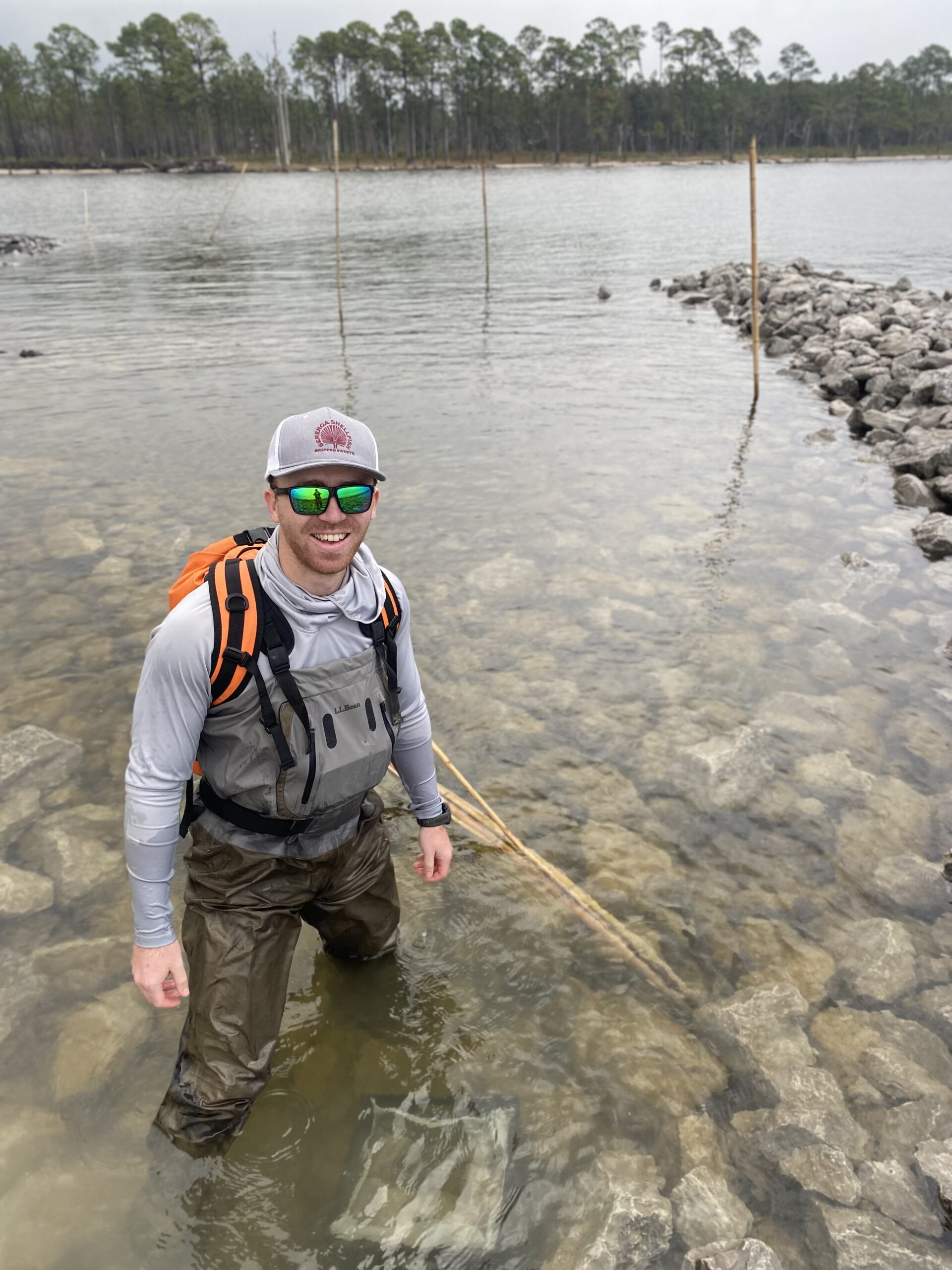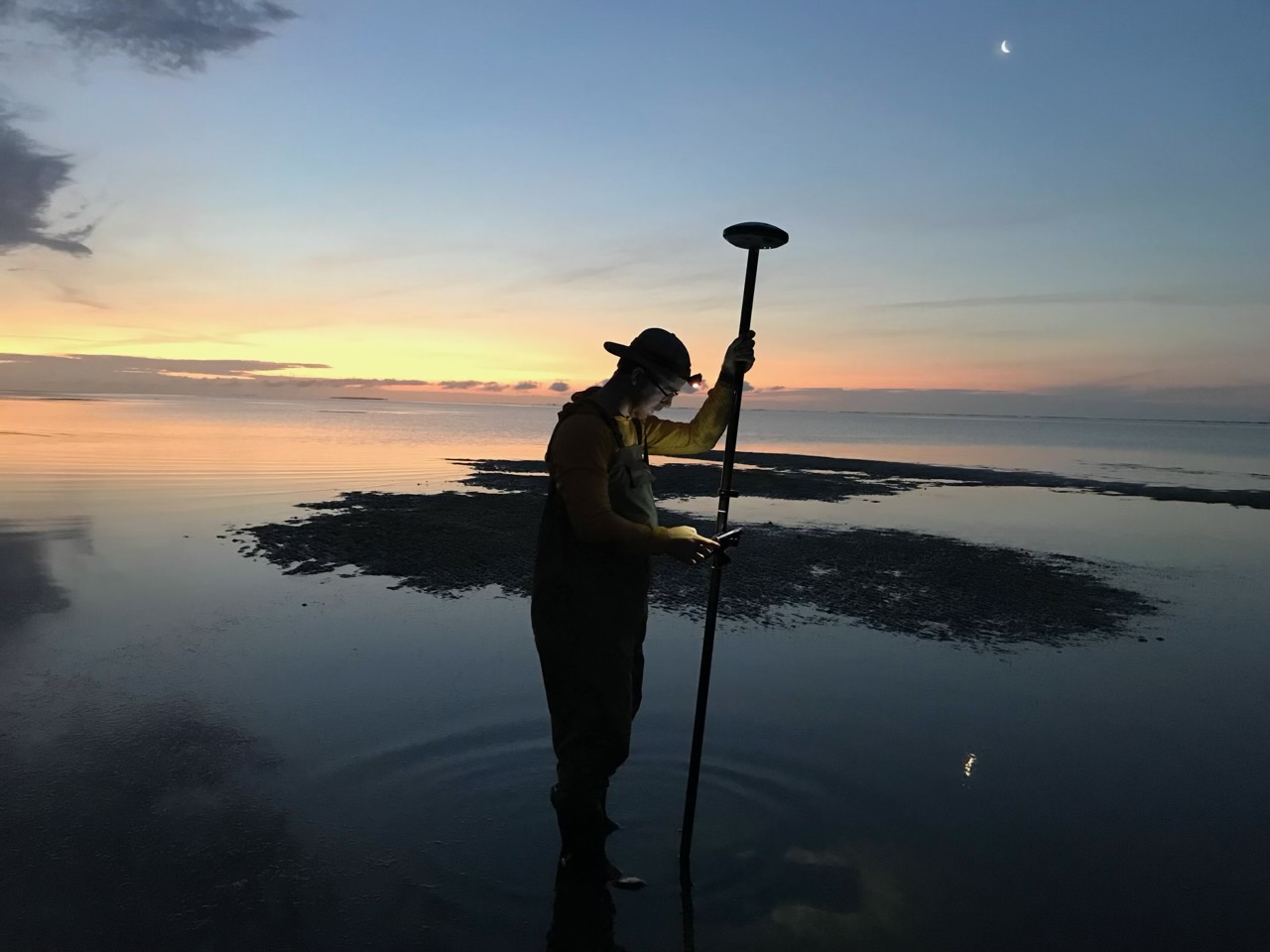How a Living Shoreline Is Protecting a Vital Infrastructure Asset
By giving nature a helping hand, a landmark restoration project is creating a more resilient coastline barrier for a highway along northwestern Florida’s Apalachicola Bay.
For years, chronic erosion and severe storms have caused substantial damage to a key six-mile coastal stretch of US Route 98 along Florida’s panhandle. Road repairs and concrete barriers after these events only provided a temporary fix to the problem.
To break the cycle and find a more permanent solution, the Apalachee Regional Planning Council, together with environmental organizations, looked past the coastline and found that the innovative and sustainable answer might be in the waters of Apalachicola Bay.
The result of that effort is the Franklin-98 Project, which involves the development of a “living shoreline” that protects the coastal edge through the use of enhanced habitat—like oyster reefs and salt marsh—to help stabilize the shoreline.
September marks the one-year anniversary of the completion of the first reef for the Franklin-98 project. In that time, the program which, at first, generated many questions and an equal amount of curiosity locally, has captured growing public interest and support.
“I’m a longtime advocate for these types of projects, which have been around for decades,” said Rick Harter, Harter Restoration and Consulting. “It’s nice to see that they are finally starting to get more attention.”
Unlike hard shoreline structures—such as concrete seawalIs, rock revetments, and bulkheads that can reduce and damage beneficial habitat—living shorelines grow over time. They also provide many additional benefits at a fraction of the cost, including wave attenuation, improved water quality, shoreline stabilization, and enhanced coastal resilience.
By giving nature a bit of a helping hand, reef ecosystems can be created and expanded much more quickly than if left to their own devices.

“A natural oyster reef can take years to form, especially if it’s a reef consisting predominantly of oyster shells,” said Will Mather, associate consultant, environmental science at WSP and project manager for Franklin-98. “Assuming ideal conditions for this project, which include good weather and a low tide around noon, our teams can build two-to-three reefs in a day.”
The overall goal of Franklin-98 is to build 20 acres of reef and 30 acres of marsh near the shoreline of Apalachicola Bay that is directly adjacent to a segment of US Route 98, a critical highway for hurricane evacuations. Because of this, the road must remain functional at all times.
Due to its location and importance, this roadway has endured a long and extremely costly history of storm-related damage, so the Apalachee Regional Planning Council partnered with WSP, a leading engineering, environment, and professional services firm, for this project.
WSP’s initial feasibility study examined all 12-miles of the highway, with the final design only including the western half of the study area between the Eastpoint breakwater and Yent Bayou.
A total of 107 reefs were planned just for Phase 1 of the project. In Phase 2, another 32 reefs will be built adjacent to the Phase 1 reefs and will include construction of reefs in front of private properties along Apalachicola Bay.
A typical reef construction crew includes three-to-four workers. When including material transport, the full team is closer to 8-to-10 personnel. To create the reefs, workers place limestone rock in predetermined locations where the reefs will be beneficial.
The project follows permit conditions established by the US Army Corps of Engineers and the Florida Department of Environmental Protection. Reefs are built at least 15 feet away from seagrass beds to avoid damaging the seagrass. None of the reefs are longer than 75 feet in any direction and there is a minimum five-foot gap between each reef to allow marine life to swim and avoid being trapped. Every reef is also built to be as high as the mean high-water level, which enables oysters to fully cover the entire reef structure.
While machinery, like excavators, are used for most of the reef construction, in some of the locations that are more difficult to reach—such as areas of shallow water surrounded by seagrass—the reefs are built by hand, as machinery would damage the seagrass beds.
“The main thing we’re seeing is how quickly our reefs are being colonized by a variety of organisms,” Mather said. “Once the marsh is fully settled and begins to expand into the accreted sediment we are starting to see around the reefs, we expect to see an even wider variety of organisms utilizing the living shoreline.”
Sometimes it can take a little while to see the results, which is often based on the timing of the reef installation. But the project has been showing some early signs of success.
“We saw oysters on the first set of reefs around two-to-three months after deployment, but those results are not universal across the project site, since reefs are being built year-round,” Mather said. “Some reefs will be in the water for many oyster spawning events, and some for only a few events. The earliest reefs installed are already heavily colonized with oysters.”

Eastern oysters in this region take about four months to reach sexual maturity and oysters tend to spawn when the water is around 68 degrees Fahrenheit. Mather added that even with the early success, it will take multiple generations of oysters—as well as avoidance of disease and predation—to fully establish a sustainable and healthy reef ecosystem.
“More oysters have been observed settling between the rocks that make up the reefs built in Phase 1, and this will start to increase the wave attenuation to the shoreline over time,” Mather said. “Right now, they have a minimal effect, but give them a year or two to grow and they will start to cement the rocks of the reef together into a cohesive mass.”
As oysters settle, live and die on the reefs, more oysters will settle on top, and the reef structures will slowly creep up and continue matching any sea level rise, creating a dynamic self-adapting system.
“While the overall ecosystem effects haven’t been fully realized yet, we are starting to see changes in accretion around the reefs,” Mather said. “Sand has started to build up in front of and behind them, and that has changed nearby sandbars. If that trend continues, we should hopefully see more sediment along the shoreline, which will contribute to more salt-marsh growth and, in turn, make it more resilient to erosion.”
Fortunately, projects like this can be pursued where the conditions are right to provide an enhanced habitat and where there is a need for the benefits of added shoreline protection. And since people in the Apalachicola Bay area are seeing the aesthetic appeal of a living shoreline in addition to the protection benefits, interest is growing.
“These projects are advancing all over the world,” Harter said. “We just want to keep educating people about the many benefits of this solution, including the added aesthetics. After all, a living system with birds, fish and crabs looks a lot better than a vertical concrete wall or a pile of rocks.”
Watch a video about the Franklin-98 Project
source https://csengineermag.com/how-a-living-shoreline-is-protecting-a-vital-infrastructure-asset/
تعليقات
إرسال تعليق